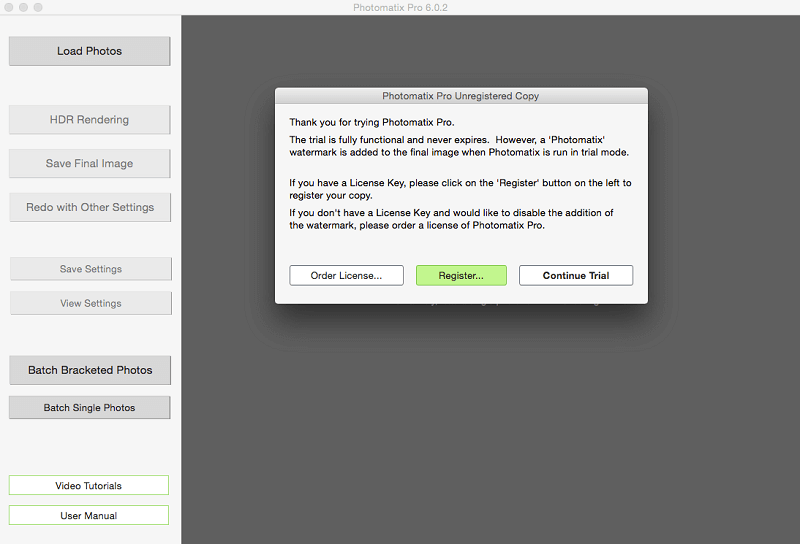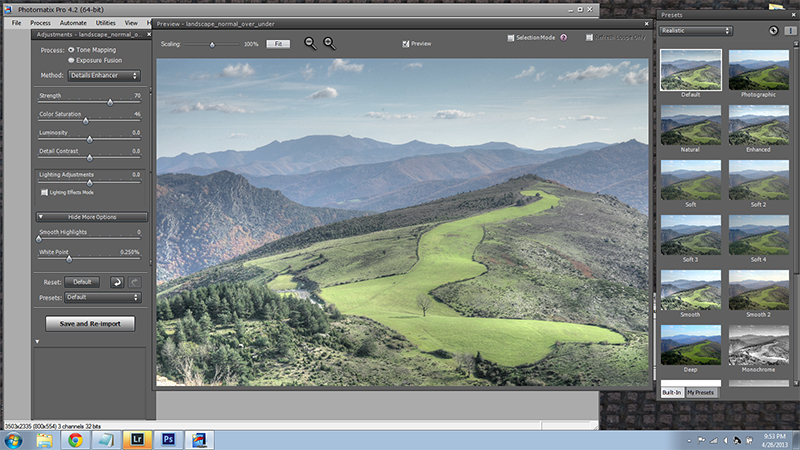
- Photomatix essentials for windows full#
- Photomatix essentials for windows android#
- Photomatix essentials for windows code#
If this location doesn't have an altitude, 0.0 is returned. On Android, altitude, if available, is returned in meters above the WGS 84 reference ellipsoid. This section describes the platform-specific differences with the geolocation API.Īltitude is calculated differently on each platform. The UnitConverters class also defines KilometersToMiles and MilesToKilometers methods for converting between the two units. Use the final argument to CalculateDistance to specify miles or kilometers. Positive latitude values are north of the equator, and positive longitude values are east of the Prime Meridian. The Location(Double, Double, Double) constructor accepts the latitude and longitude arguments, respectively. Location sanFrancisco = new Location(37.783333, -122.416667) ĭouble miles = Location.CalculateDistance(boston, sanFrancisco, DistanceUnits.Miles)
Photomatix essentials for windows code#
The following code calculates the distance between the United States of America cities of Boston and San Francisco: Location boston = new Location(42.358056, -71.063611) This calculation is known as the great-circle distance calculation. This calculated distance doesn't take roads or other pathways into account, and is merely the shortest distance between the two points along the surface of the Earth. The CalculateDistance method calculates the distance between two geographic locations. If (location != null & location.IsFromMockProvider)

GeolocationRequest request = new GeolocationRequest(GeolocationAccuracy.Medium) You can detect this by using the IsFromMockProvider on any Location: public async Task CheckMock() Some devices may return a mock location from the provider or by an application that provides mock locations. For more information, see the Platform differences section. IOS has some limitations regarding accuracy. Other values that may not be present include Speed and Course. For example, the Altitude property might be null, have a value of 0, or have a positive value indicating the meters above sea level. Not all location values may be available, depending on the device. If (_isCheckingLocation & _cancelTokenSource != null & _cancelTokenSource.IsCancellationRequested = false) Catch one of the following exceptions: The following code example demonstrates checking for a cached location: public async Task GetCachedLocation() When necessary, the Geolocation API prompts the user for permissions. If no cached location exists, this method returns null.
Photomatix essentials for windows full#
This is often faster than doing a full location query, but can be less accurate. Use the GetLastKnownLocationAsync() method to access the cached location, if available. The device may have cached the most recent location of the device. The element is the reason the app is requesting access to location information with full accuracy. If you're going to request full accuracy with the GeolocationRequest.RequestFullAccuracy property, add the following dictionary to the Platforms/iOS/ist and Platforms/MacCatalyst/ist files: NSLocationTemporaryUsageDescriptionDictionaryįill in a reason why your app needs full accuracy The element is the reason the app is requesting access to location information. In the Platforms/iOS/ist and Platforms/MacCatalyst/ist files, add the following keys and values: NSLocationWhenInUseUsageDescriptionįill in a reason why your app needs access to location.
Photomatix essentials for windows android#
Open the Platforms/Android/AndroidManifest.xml file and add the following in the manifest node: īe sure to read the Android documentation on background location updates, as there are many restrictions that need to be considered.


If your application is targeting Android 10 - Q (API Level 29 or higher) and is requesting LocationAlways, you must also add this permission request: Open the Platforms/Android/MainApplication.cs file and add the following assembly attributes after using directives: Coarse or fine location permissions, or both, must be specified and should be configured in the Android project.Īdditionally, if your app targets Android 5.0 (API level 21) or higher, you must declare that your app uses the hardware features in the manifest file.


 0 kommentar(er)
0 kommentar(er)
